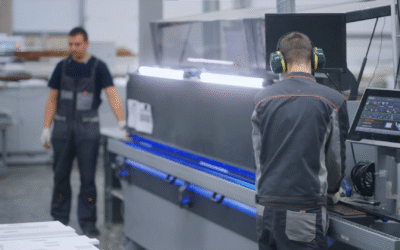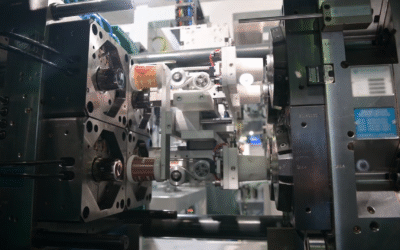IoT Digital Twin for Pharmaceutical Industry—Ensuring Quality and Compliance in Drug Production
Introduction
Drug manufacturing demands absolute precision, hygiene, and compliance with regulatory standards. Even minor deviations can lead to batch rejection, delayed approvals, or patient safety issues. The integration of IoT Digital Twin for Pharmaceutical Manufacture helps create a real-time virtual environment to monitor, simulate, and optimize every aspect of production—ensuring high product quality, process consistency, and regulatory compliance.
This case study focuses on the implementation of a digital twin solution for the tablet compression process in a pharmaceutical production facility.
Challenges in Drug Manufacturing
- Inconsistent tablet weight, hardness, and disintegration time.
- Downtime during preventive maintenance and manual quality checks.
- Stringent FDA and GMP compliance requirements.
- Limited real-time visibility into machine and batch performance.
- High waste due to undetected process deviations.
Process of IoT Digital Twin for Pharmaceutical Manufacture
- Sensing (Data Collection)
IoT sensors were integrated into the tablet press machine to capture data such as punch force, tablet thickness, rotation speed, feed rate, humidity, and temperature inside the compression zone. This data continuously updated the IoT Digital Twin for Pharmaceutical Manufacture for real-time production insights.
- Transmission (Data Transfer)
Sensor data was transferred securely via industrial protocols (OPC-UA, MQTT) to edge gateways and cloud platforms, ensuring reliable and encrypted data flow without production interruptions.
- Data Processing (Edge or Cloud Computing)
Edge processors monitored critical parameters in real time to immediately halt production if thresholds were exceeded. Cloud systems processed long-term trends, quality control metrics, and predictive models for process optimization.
- Data Storage
Batch data, sensor logs, and machine performance metrics were stored in secure, GMP-compliant cloud storage systems, enabling audit trails and long-term traceability.
- Data Analysis (AI/ML Integration)
Machine learning models predicted deviations based on raw material variability, equipment wear, or environmental changes. AI-driven recommendations optimized compression settings to maintain batch consistency.
- Decision Making / Action Execution
The system automatically adjusted punch pressure, feed rate, or cooling speeds based on real-time feedback. It also issued predictive maintenance alerts before critical machine failures occurred.
- User Interface
Production supervisors accessed dashboards showing machine status, product quality metrics, and batch history. Alerts and compliance status were integrated for real-time review and documentation.
- Digital Twin Interface (Remote Monitoring & Control)
The IoT Digital Twin for Pharmaceutical Manufacture displayed a virtual replica of the tablet production line. Managers could remotely simulate process changes, run “what-if” scenarios, and monitor live operations across multiple lines.
Results and Impact
| Metric | Before Implementation | After Implementation |
| Batch Rejection Rate (%) | 3.6 | 0.8 |
| Downtime Due to Maintenance (hrs/mo) | 18 | 6 |
| Tablet Weight Variability (%) | ±5% | ±1% |
| FDA/GMP Non-Compliance Flags | 4 (last year) | 0 |
| Waste Reduction per Batch (kg) | 25 | 8 |
- 76% reduction in batch rejection, ensuring higher yield and lower production waste.
- Consistent tablet quality through dynamic real-time parameter control.
- Compliance improved significantly with automated data logging and traceability.
- Predictive maintenance decreased unplanned downtime and improved machine utilization.
- Substantial material and cost savings through early detection of deviations.
Benefits of IoT Digital Twin for Pharmaceutical Manufacture
- Improved Product Quality & Consistency
Real-time adjustments to process variables minimize batch variability and ensure compliance with pharmacopoeial standards. - Regulatory Compliance & Documentation
The digital twin ensures full audit trails, automated logs, and remote access for FDA and GMP inspections. - Predictive Maintenance
AI-driven insights detect early signs of equipment wear, preventing unexpected downtime and costly repairs. - Waste Reduction
Early detection of material or process deviations leads to reduced batch rework or rejection. - Remote Monitoring & Control
Facility managers and quality assurance teams can visualize and control the drug manufacturing process from anywhere. - Process Optimization Through AI
Machine learning continuously improves production settings based on batch history and real-time performance.
Conclusion
The integration of the IoT Digital Twin for Pharmaceutical Manufacture is transforming drug production facilities into smarter, safer, and more efficient environments. By enabling real-time monitoring, advanced analytics, and remote control, pharmaceutical companies can enhance quality, reduce costs, and ensure full compliance.
This case study highlights how the use of IoT and digital twin technologies in pharmaceutical operations can result in significant operational benefits—turning data into decisions, and insight into action. For more content, visit EFFE Technology.




